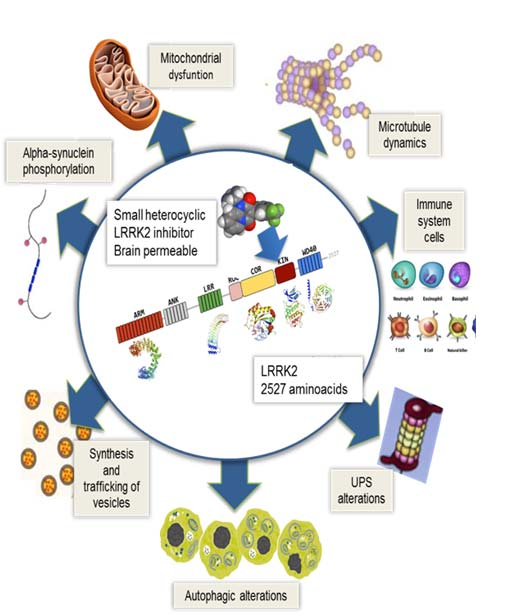Novel compounds for Parkinson's and Alzheimer's
Neurodegenerative diseases, currently increasing, show as a common characteristic a progressive loss of neurons in specific regions of the nervous system and the deterioration of cognitive and motor functions. The lack of a specific treatment in most of them, leads to the continuous search for new therapeutic targets.
LRRK2 is a protein that has been classified as a member of the ROCO superfamily (Ras-like GTPase). Its physiological role is not well determined, but it has become an interesting target for neurodegenerative diseases, especially Parkinson's disease. It may also be related to other pathologies in which the tau protein is affected, as well as to the inflammatory response, oxidative stress, synaptic and mitochondrial dysfunctions and neurogenesis in adults. Because of the interest in LRRK2 as a therapeutic target for neurodegenerative diseases, inhibitors of this enzyme have been found that would be potential treatments, but most of these compounds present the difficulty of not crossing the blood-brain barrier or being less selective towards other protein kinases, which is an important problem in drug candidates for the treatment of diseases of the central nervous system (CNS) Researchers have developed compounds with a privileged structural core that makes them selective inhibitors of the LRRK2 protein, and capable of crossing the blood-brain barrier. The authors have shown the neurogenic activity of these compounds as well as their involvement in neuroprotection against the phosphorylation of the tau protein.
Main innovations and advantages
· These molecules can cross the blood-brain barrier, which is an additional advantage of the compounds when used in therapeutic treatments of diseases related to the central nervous system · They can be presented in the most suitable pharmaceutical formulation for each treatment.







